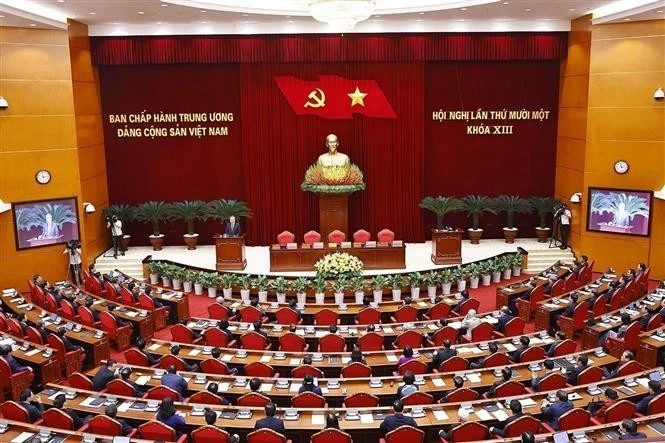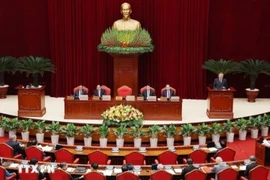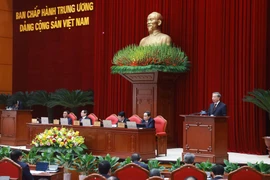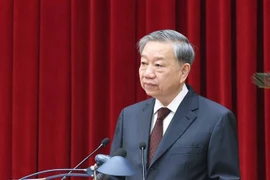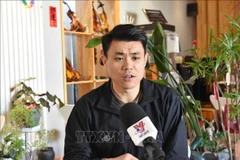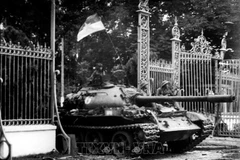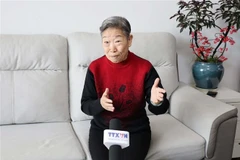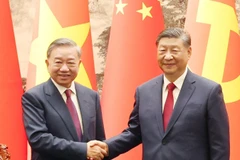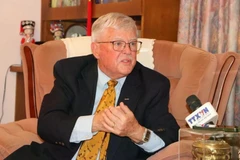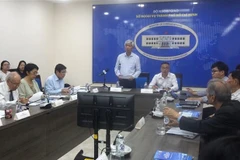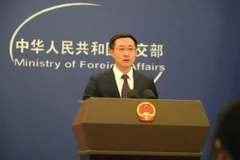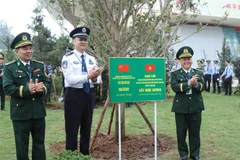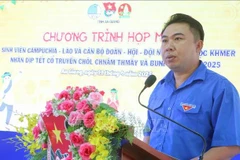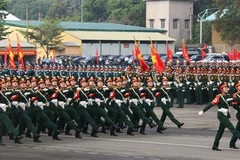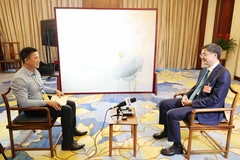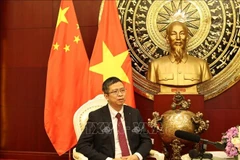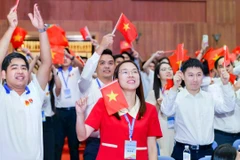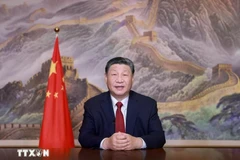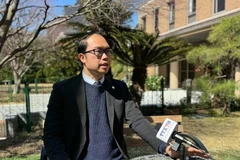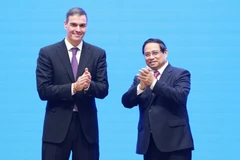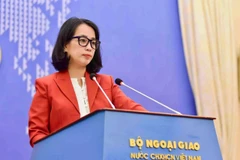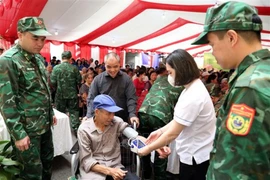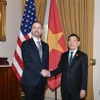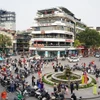Hanoi (VNA) - The 11th plenum of the 13th Party Central Committee wrapped up on April 12 afternoon after three days of sitting, with all of its agenda completed.
Addressing the closing session, Party General Secretary To Lam said that members of the committee discussed many new and important matters, and reached high consensus on major and core issues, culminating in a unanimous vote to adopt the plenum's resolution.
Many members proposed the Politburo recognise the session as a historic one, marking a turning point with bold decisions for the country’s new phase of revolutionary development, he said.
The Party chief praised the committee’s proactive, scientific, and efficient work attitude, as well as the thorough and focused preparations carried out by sub-committees and relevant agencies.
He said that the Party Central Committee reached broad agreement on proposals concerning the continued restructuring of the political system’s organisational apparatus, rearranging administrative units and organising local administrations with provincial and communal levels. Under the new model, the country will comprise 34 provincial-level units (28 provinces and six centrally-run cities), with specific names and administrative centres determined according to the outlined principles.
The dissolution of district-level administrative units will be conducted, pending the National Assembly’s revision of the 2013 Constitution and the 2025 Law on Local Government Organisation. Commune-level units will be merged to reduce their overall number by around 60–70%.
Lam affirmed the support for aligning local Party structures with the new administrative levels - province and commune - while disbanding district-level Party organisations in accordance with the Party's Charter and regulations.
Following the new structure, provinces will both implement central policies and issue provincial/municipal policies. They will also directly oversee commune-level activities. Communes, meanwhile, will execute policies handed down from the central and provincial levels, while gaining more autonomy to issue local legal documents, organise law enforcement as well as decide issues within their authority.
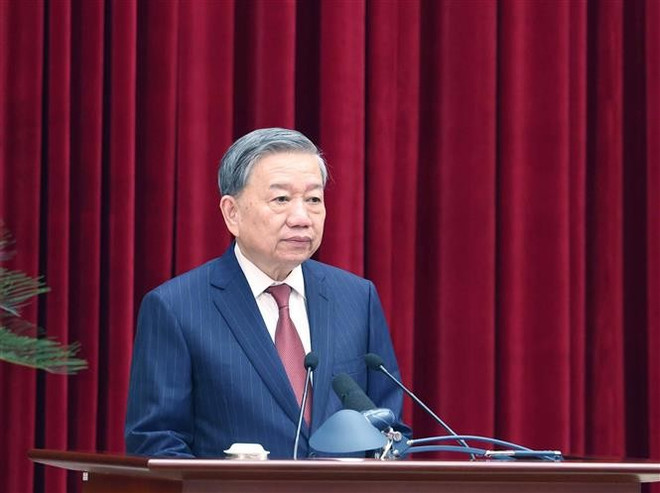
The Party leader also gave the green light to merge and streamline the Vietnam Fatherland Front committees, socio-political organisations, and mass associations across all levels. This includes disbanding unions for civil servants and armed forces, and reducing union fee contributions for workers and employees.
The Party Central Committee agreed on restructuring the People’s Courts and People’s Procuracies. The district and high-level courts/procuracies will be dissolved, replaced by a three-level system -the Supreme People’s Court/Procuracy, provincial/municipal and regional courts/procuracies. The structure of military courts and procuracies remains unchanged.
It also reached consensus on amendments to the Constitution and relevant laws, which must be finalised by June 30, and come into effect from July 1, with provisions on transitional period to ensure continuity and alignment with the reorganisation roadmap.
General Secretary Lam underlined that the National Assembly, Government, and relevant bodies must work closely and efficiently to carry out institutional reforms. The goal is to remove legal and procedural bottlenecks, especially in public procurement, budgeting, public investment, private sector development, science and technology, innovation, and digital transformation, facilitating the revolution on organisational apparatus.
He also emphasised the need to foster a legal environment that is transparent, safe, and low-cost, while turning institutional obstacles into competitive advantages to help position Vietnam as a regional leader in administrative reform and innovation.
Regarding the draft documents for the 14th National Party Congress, the Party Central Committee agreed that they are concise (cut down by 30–35%) yet still comprehensive and action-oriented. These drafts are seen as exemplary for guiding similar documents at all Party levels.
The Party Central Committee recommended implementing some of the key proposals immediately, and asked drafting subcommittees to continue refining the texts to reflect new challenges and opportunities, with revolutionary thinking and methods to ensure sustainable and self-reliant development.
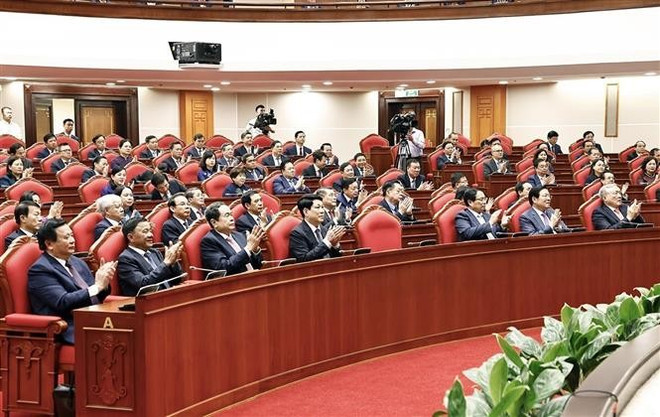
The General Secretary urged Party committees preparing and implementing local congresses to engage deeply with the draft documents and contribute to the 14th National Congress materials.
He said that the Party Central Committee approved guidelines for selecting personnel for the 14th Central Committee, along with updates to the Party Charter enforcement regulations, supervision and inspection, disciplinary measures, and directions for the upcoming congresses at all Party levels. It also endorsed plans for the elections of deputies to the 16th National Assembly and the 2026–2031 People’s Councils.
Mentioning immediate tasks, Lam said that for provinces undergoing mergers, local leaders must promptly revise their congress documents to reflect a new, broader development vision. Rather than simply combining old materials, new documents must reflect the merged province’s expanded potential.
At the grassroots level, merged communes must adopt a similar approach, he said.
Particularly, personnel appointments must prioritise competency and job suitability above all else. Provincial Party Committees, especially of localities under mergers, must carefully deliberate staffing plans to ensure consensus and clarity, especially regarding key leadership positions, he asked.
He also urged sub-committees to promptly collect ideas and perfect the draft documents for their congresses, and submit reports to the 12th plenum of the Party Central Committee.
In conclusion, the Party chief acknowledged the enormous tasks ahead, stressing that the people and Party members are eager for productive results. However, with strong unity and determined leadership, he expressed confidence that the country will overcome all challenges and achieve all of its set ambitious targets./.
